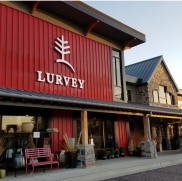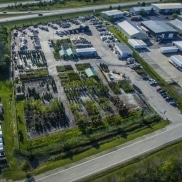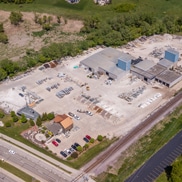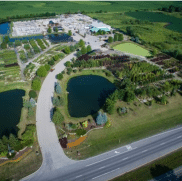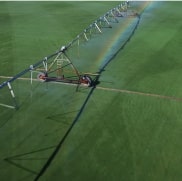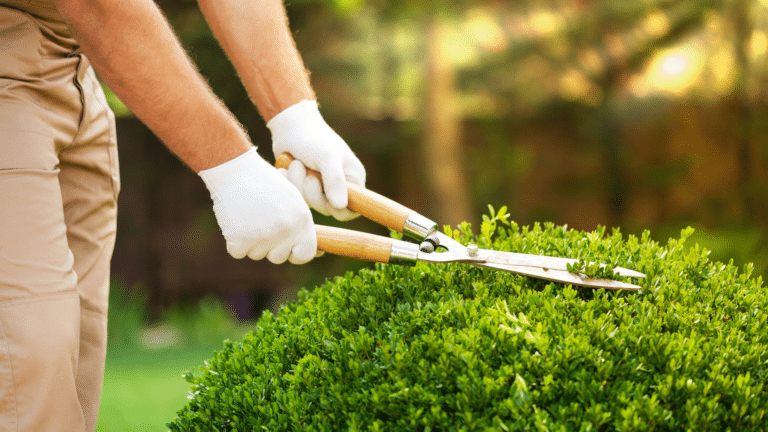Ficus lyrata – also called fiddle leaf, fiddle fig, FLF, lyrata.
Fiddle leaf fig has become the “it’ plant for interior design in past years for its beauty and large leaves. It is also beneficial as it purifies the air and produces oxygen. It has a reputation as being “difficult” but once you understand its needs, the fiddle leaf fig can be cared for easily, even for beginners. The full size variety can grow to the ceiling of the house or 10’ to 20’ tall, and with proper conditions can grow 2’ or 3’ a year. Figs love consistency, temperatures, light, water, and humidity. Along with fertilization, pruning, and adapting to seasonal issues, you can keep a fiddle leaf fig happy and alive for years.
Soil
Needs a well-drained, light soil. Figs do not like to have a soggy soil. Fox Farm potting soil or Professional mix are great for keeping roots oxygenated.
Light
A bright indirect light is best, direct midday sunlight can scorch the leaves. Rotate the plant every couple weeks to assure the leaves do not bend in one direction. 12 to 14 hours of light is ideal, in winter add a grow light to shine for the additional hours.
Water
Keep evenly moist and never soaking wet or very dry. Depending on the seasons, summer when air is on and no humidity or winter when the heat is on, watering should be adjusted accordingly. The plant may not take up as much water in winter. Consistency is still important, sometime watering more often with less water will keep soil evenly moist rather than once a week where the soil can be very wet until the plant uses it, or it evaporates. Misting or a humidity tray during a dry winter can help with increasing humidity.
Miscellaneous tips
Because of their large leaf surface, figs do not like drafts from heat or a/c vents. When cleaning the house remember to clean the dust off the leaves, it can block light and hinder photosynthesis. Figs do have a milky sap which can irritate skin and can irritate cats and dogs mouths and if ingested may cause stomach issues or diarrhea.
Nutrition
Once a month with a liquid organic fertilizer. Fox Farm or Espoma.
Enjoy the Outdoors
Fiddle leaf figs will enjoy and thrive outdoors from June through September. They must be placed in a shaded area, the summer sun will scorch the leaves. Light intensity in the house of a south window is about 1500 foot candles, 500 foot candles for an east and west window. Outdoor shade equals 1000-2000, in comparison full sun is 10,000-12,000 foot candles. The duration and intensity will boost the vigor of the plant. A draw back is when the plant is brought back in the house it will acclimate to the new lower light conditions and drop some leaves, this is normal. Also check for insects that may have stowed away on the plant or in the soil.
Pruning
If you purchased a fiddle fig that is one stem upright, eventually you will have to prune to have the stem branch out. Pruning a single branch will promote horizontal growth. Then the pruned stem can be rooted for a new plant.
Problems
Insects that can attack a fiddle leaf are scale, mealybug, spider mites, and aphids. By cleaning the leaves on a regular basis, insects can be controlled by scouting for any infestation and applying organic insecticides like insecticidal soap before getting a large infestation. Dropping leaves are a sign of dry soil, low humidity, moving the plant, insects, lower leaf drop is old age. Brown edges can be from low humidity, cold or hot drafts, fungal disease, bruising. Dark spots on edges is a sign of overwatering. Spots scattered can be underwatering, overwatering, low light conditions, insects, sunburn.
Leggy new growth can be low light, lack of nutrition, winters short days. Yellow leaves is a sign of natural aging, lack of nutrition, fungal disease. Discoloration of a purplish tone can be from cold temperatures or a cold draft, a consistently wet soil. Edema is similar with brown/reddish patches on leaves. They can be permanent or go away in time, but it does not affect the plant. It is an imbalance of water and plant when cells ruptures. Can be caused overwatering, high humidity, and over fertilization.
